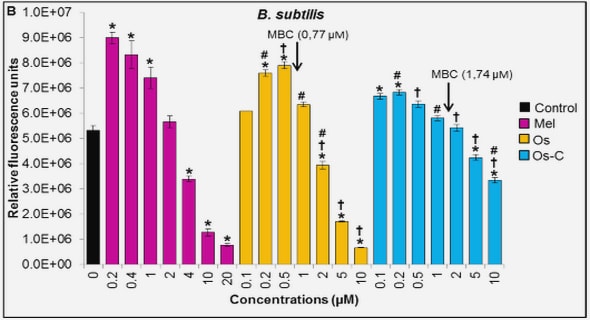Get Complete Project Material File(s) Now! »
Producing and imaging two–dimensional Bose gases
Since this experimental apparatus was built for a large part by previous PhD students, a detailed description of it can be found in [66–68]. Therefore, in the first half of this chapter, we provide a simple description of the experimental sequence. We will detail further both the most recent modifications, and the experimental steps specific to the preparation of a two-dimensional Bose gas. In the second half, we will describe in detail our image acquisition process, both in its theoretical and experimental aspects.
A new setup: the hybrid trap
The first stage of evaporative cooling takes place in a quadrupole trap, which is the easiest magnetic trap to build. It is also well suited for radio-frequency evaporation: indeed, as opposed to the optical evaporation, lowering the trap depth does not weaken the confinement. However, a quadrupole trap has a major drawback: since the magnetic field cancels at its center, atoms crossing this region can be lost through Majorana spin-flips. The loss rate is inversely proportional to the temperature: hot clouds can be efficiently trapped and evaporated, but Majorana losses put an upper bound on the phase space density obtained in this trap [93]. For realistic experimental parameters, it is not possible to create a condensate in these conditions.
On the first version of our experimental setup, this problem was avoided by applying a time-orbiting bias field, to realize a TOP trap [1]. In this setup, the effective magnetic field seen by the atoms does not cancel at the center of the trap, thus suppressing the spin-flip induced losses. However, this approach led to weak confinement frequencies: 2π × (32, 32, 92) Hz in our experiment. Consequently, the collision rate could not be made very large, thus evaporative cooling in this trap was quite slow: our optimal condensation sequence took 80 s to complete. In order to shorten this duration, we chose instead to circumvent Majorana losses by adding an attractive optical trap to the quadrupole, as demonstrated in [94] and [95].
The idea is superpose an attractive dipole trap of depth UH with the quadrupole trap. When the cloud is sufficiently cold (kB T ≤ UH) but before Majorana losses start to be significant, the gradient of magnetic field is adiabatically lowered, which simultaneously cools down the atoms, and transfers them inside the dipole trap. To prevent Majorana losses both during and after the transfer.
Preparing two-dimensional Bose gases and reaching degeneracy
The Hermite–Gauss beam As we saw in Sec. 1.1, the experimental realization of a two-dimensional Bose gas requires a strong confinement along one direction of space, which is chosen to be the vertical z direction. The temperature of the cloud is typically 100 nK: this requires a confining harmonic potential of characteristic angular frequency ωz > kB/¯h 100 nK = 2π × 2 kHz. This harmonic trapping is realized by a 532 nm laser beam (blue detuned with respect to the atomic resonance). To achieve a suitable geometry for the optical trap, we shine a collimated laser beam on a phase plate. This phase plate imprints a phase of π on the upper half of the beam (z > 0) with respect to the other half (z < 0). The beam then propagates, and is focused on the atoms by a converging lens (see Fig. 2.2 for the geometrical arrangement).
At the focus of the lens, the electric field is the Fourier transformof the electric field after the phase plate in the paraxial approximation. The expected intensity profile can then be calculated: the two halves of the beam interfere destructively, and the intensity distribution presents a minimum in the center (Fig. 2.3). In the nodal plane, the intensity distribution around the minimum can be approximated by: I(y, z ≪ wz) ≈ I0 4 π z2 w2z e−2 y2 w2.
Imaging two-dimensional Bose gases and processing the data
Once the preparation of the atomic cloud is complete, it must be probed and analyzed to extract relevant physical parameters. For cold atoms experiments, the most straightforward method is absorption imaging. The accurate determination of the atomic density thus relies both on a precise measurement of the intensity distribution of the laser beam used to image the cloud, and on the correct knowledge of the relation between the atomic density and the light intensity. The data obtained in this manner can then be further processed to improve the signal-to-noise ratio, and to finally determine quantities other than the density by a fitting process, such as the chemical potential and the temperature.
An algorithm for image processing: the Principal Component Analysis (PCA)
The quality of our data processing is directly dependent on the signal-to-noise ratio of our image acquisition. Our imaging process is mainly limited by the photonic shot-noise, and we would like to resolve properly the thermal wings of our atomic samples, down to optical densities of 0.05, or to spatial densities of 0.2 μm−2. In the low-intensity configuration, the imaging beam illuminates The CCD with Nph ≈ 600 photons, which means we hope to extract a signal from 30 missing photons. In comparison, the photonic shot-noise has a standard deviation q δN2 ph = 25 photons. Thus, small signals are comparable with the noise on a single-shot basis, but can easily be resolved by averaging, either by exploiting the LDA and the symmetry of the trap, or by combining several images of the same atomic sample. Another limitation is the presence of inhomogeneities in the intensity profile of the imaging beam: if these inhomogeneities shift between the atomic image and the reference image, the density profile will be affected. These defects will locally modify the density profiles, but not necessarily in the same way on different images.
The first noise reduction process stems from the rotational symmetry of the trap. For a harmonic trap of known frequencies ωX and ωY, the density should be constant along contours defined by ω2X x2 + ω2Y y2 = C. In the following, we will assume the trap to be isotropic without loss of generality. For a point located r pixels away from the center of the cloud, there are 2π × r pixels sampling a region of identical trapping potential. For r = 10 pixels, an azimuthal average will then increase the signal-to noise ratio, by reducing the standard error introduced by the shot-noise to at most ≈ 5 photons. Thus, low densities can be efficiently probed as long as they are found far enough from the center of the cloud.
Table of contents :
Résumé en français
Introduction
1. Phase transitions with ultracold two-dimensional Bose gases
1.1. The ideal gas
1.1.1. The infinite uniform two-dimensional Bose gas
1.1.2. Bose-Einstein condensation in a finite system
1.2. The interacting two-dimensional Bose gas
1.2.1. Interactions in two dimensions: the quasi 2D regime
1.2.2. Scale invariance in 2D
1.2.3. The mean-field Hartree–Fock approximation
1.2.4. The Berezinskii-Kosterlitz-Thouless (BKT) transition .
2. Producing and imaging two–dimensional Bose gases
2.1. Experimental setup
2.1.1. Experimental sequence
2.1.2. A new setup: the hybrid trap
2.1.3. Preparing two-dimensional Bose gases and reaching degeneracy
2.2. Imaging two-dimensional Bose gases and processing the data
2.2.1. Using absorption images to determine the density
2.2.2. Imaging setup
2.2.3. An algorithm for image processing: the Principal Component Analysis (PCA)
3. The equation of state of the two-dimensional Bose gas
3.1. Exploring the thermodynamics of a two-dimensional Bose gas
3.1.1. Experimental preparation of 2D samples
3.1.2. Thermodynamic analysis
3.1.3. Measuring the interaction energy
3.2. A fit-free equation of state: compressibility, density and pressure
3.2.1. Choosing the correct dimensionless variables
3.2.2. Characterizing the trapping potential
3.2.3. Measuring the equation of state with the global method .
3.2.4. Thermometry on single images
3.2.5. Excited levels in the transverse direction
4. Superfluidity in two dimensions
4.1. A brief theoretical overview
4.1.1. The three-dimensional case
4.1.2. The two–dimensional case
4.2. Superfluid character of a two-dimensional Bose gas
4.2.1. Experimental scheme
4.2.2. Observation of a critical velocity
4.2.3. Comparison with theory
4.3. Closing remarks
5. Fluctuations of the two-dimensional Bose gas
5.1. Experimental procedure
5.2. Local density fluctuations
5.2.1. Characterizing the density minima
5.2.2. Quantifying the distribution of minima
5.2.3. Qualitative interpretation
5.3. Density correlation function
5.3.1. Correlation in real space
5.3.2. Correlations in reciprocal space
5.4. Concluding remarks
6. The uniform two-dimensional Bose gas
6.1. A brief theoretical analysis
6.1.1. Ideal gas in a stadium potential
6.1.2. Interacting gas in a stadium potential
6.1.3. Experimental perspectives
6.2. Experimental realization: preliminary studies
6.2.1. Creating a box-like potential: a holographic method
6.2.2. Creating a box-like potential: by forming the image of a mask
7. Single atom imaging scheme
7.1. Working principles
7.1.1. Optical molasses
7.1.2. The pinning lattice
7.1.2.1. Influence of the hyperfine structure of the excited states
7.1.2.2. Influence of the hyperfine structure of the ground state
7.1.2.3. Heating by spontaneous emission of photons
7.1.2.4. “Gray molasses” effect from the lattice
7.1.3. Choosing the parameters
7.2. Characterizing our implementation
7.2.1. Experimental setup
7.2.2. Preliminary results
Concluding remarks
Summary
Perspectives
On the two dimensional Bose gas
On strongly correlated states
Appendix A. Contribution of the excited states to the EoS
Appendix B. Conversion of phase fluctuations into density fluctuations
B.1. Density distribution, in real and reciprocal space
B.2. Case of a small perturbation
B.3. Interpretation in terms of Talbot effect
Appendix C. Diagonalization of the vectorial light shift in a lattice
Appendix D. Collection efficiency of the imaging system
Bibliography


